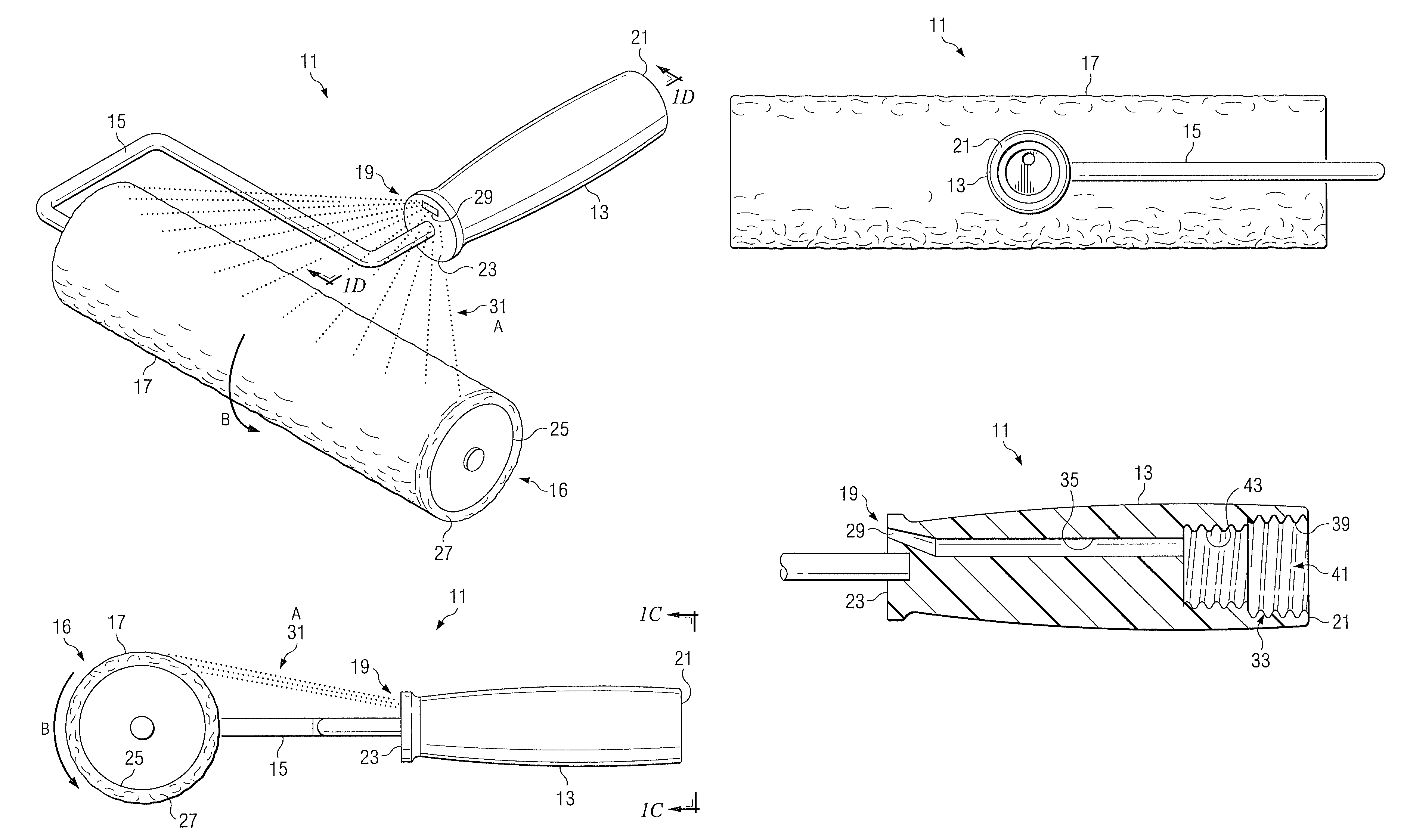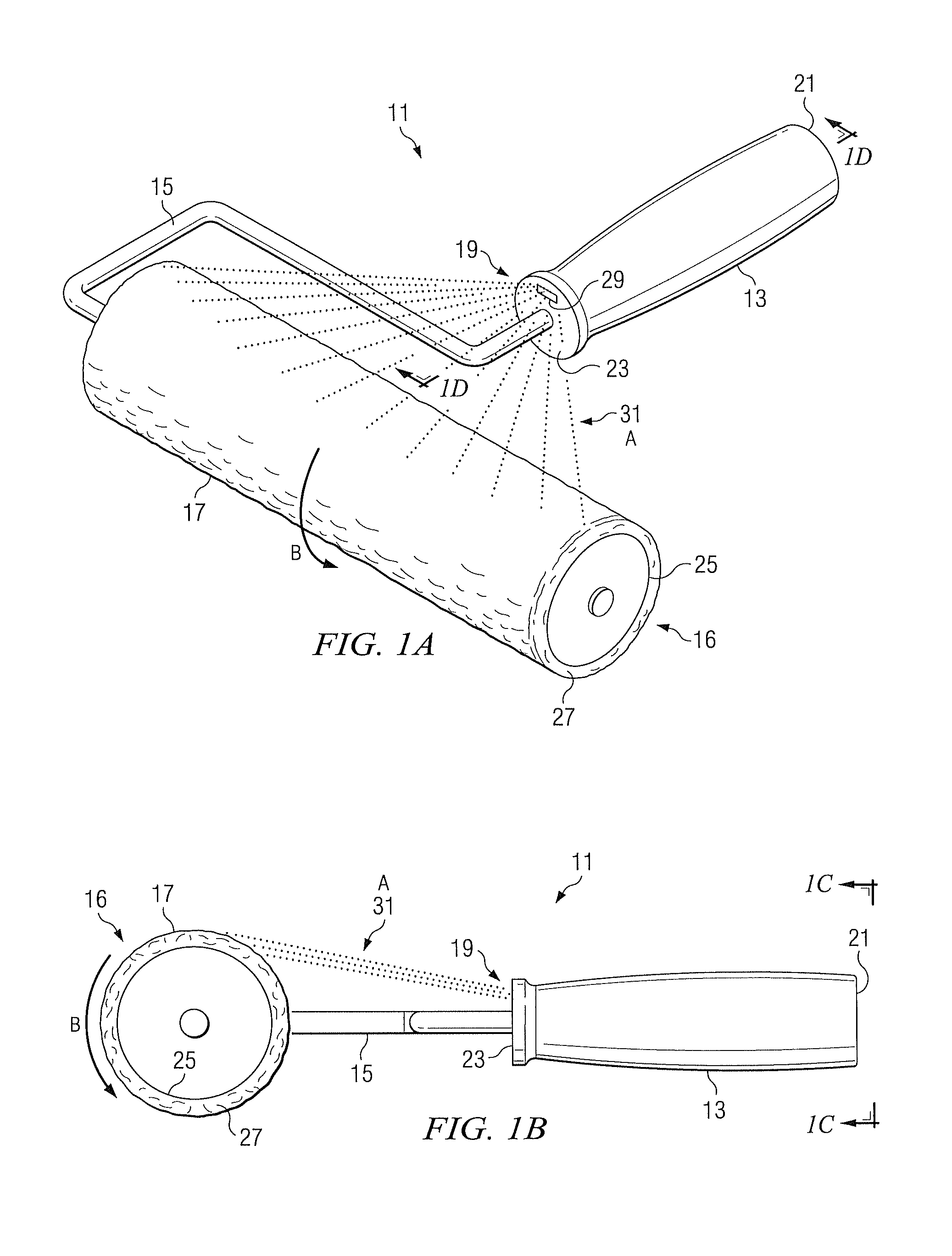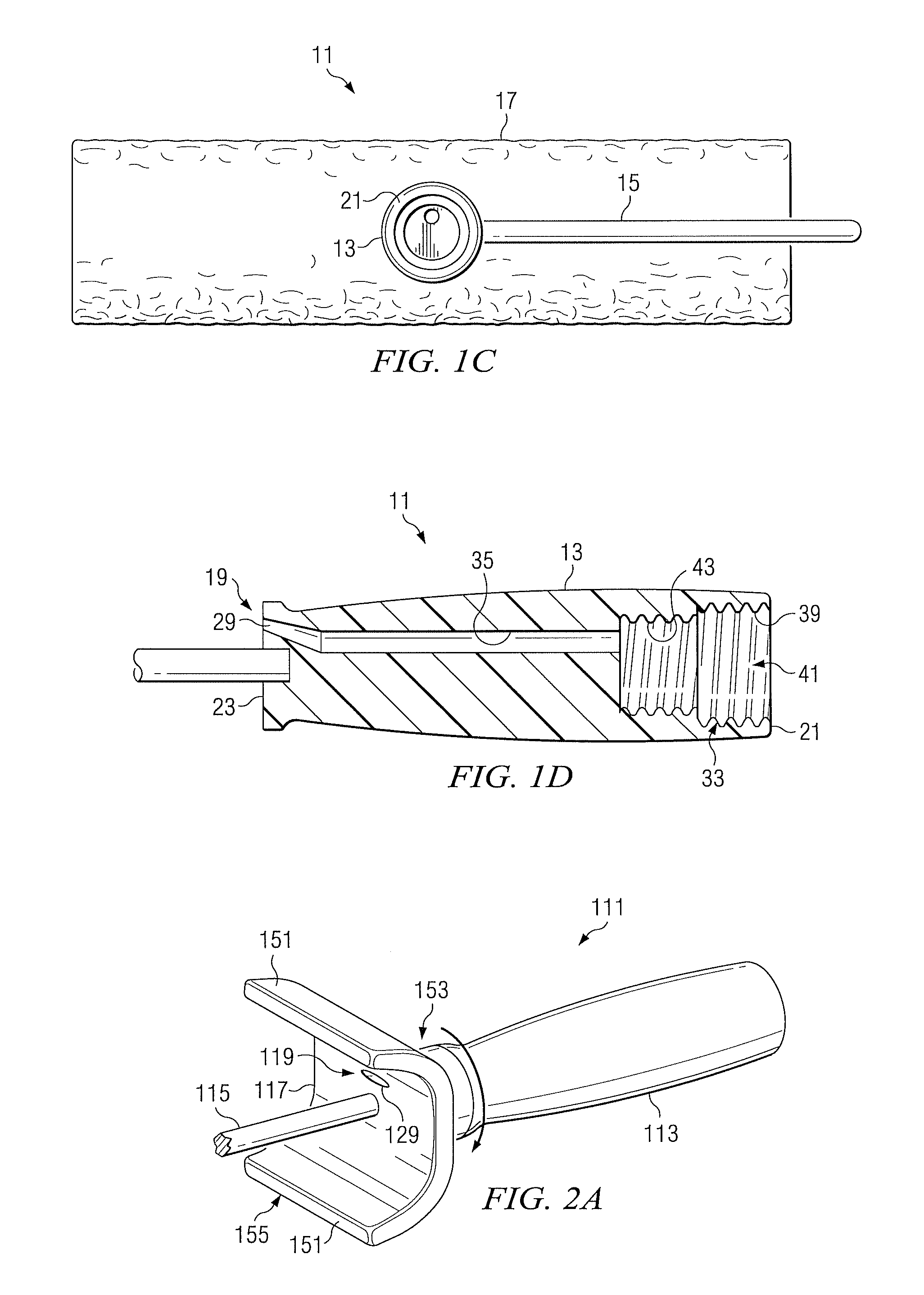Self-cleaning paint roller
a self-cleaning, paint roller technology, applied in the direction of coatings, printing, spraying apparatus, etc., can solve the problems of time-consuming and messy processes, inconvenient hannah system, and the need to remove the roller sleeves from the roller, so as to reduce the time spent cleaning, quick and easy paint, and the effect of quick and easy system
- Summary
- Abstract
- Description
- Claims
- Application Information
AI Technical Summary
Benefits of technology
Problems solved by technology
Method used
Image
Examples
Embodiment Construction
[0045]Referring now to FIGS. 1A-1D in the drawings, the preferred embodiment of a self-cleaning paint roller assembly 11 according to the present invention is illustrated. Paint roller assembly 11 preferably comprises a handle 13, a frame 15 coupled to handle 13, a roller 16 rotatably carried by frame 15, and an integral cleaning means 19. Handle 13 has a proximal end 21 and a distal end 23. Although handle 13 is illustrated as a solid grippable elongate member, it will be appreciated that handle 13 may be alternatively be shaped and configured. Roller 16 is adapted to slidingly receive a roller sleeve 17 that is adapted to receive and distribute paint. Roller 16 may include a means for latching and / or centering roller sleeve 17. When assembled onto paint roller assembly 11, roller sleeve 17 is free to rotate about a portion of frame 15. Although frame 15 is shown bent or angled such that roller 16 is substantially transverse to handle 13, it should be understood that frame 15 may a...
PUM
 Login to View More
Login to View More Abstract
Description
Claims
Application Information
 Login to View More
Login to View More - R&D
- Intellectual Property
- Life Sciences
- Materials
- Tech Scout
- Unparalleled Data Quality
- Higher Quality Content
- 60% Fewer Hallucinations
Browse by: Latest US Patents, China's latest patents, Technical Efficacy Thesaurus, Application Domain, Technology Topic, Popular Technical Reports.
© 2025 PatSnap. All rights reserved.Legal|Privacy policy|Modern Slavery Act Transparency Statement|Sitemap|About US| Contact US: help@patsnap.com



